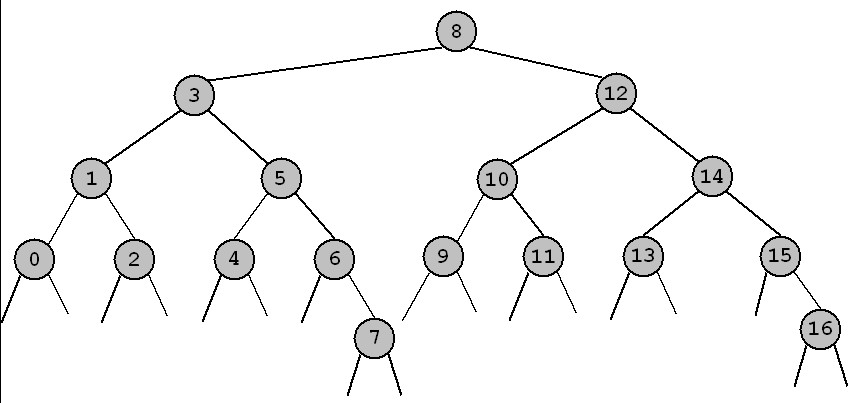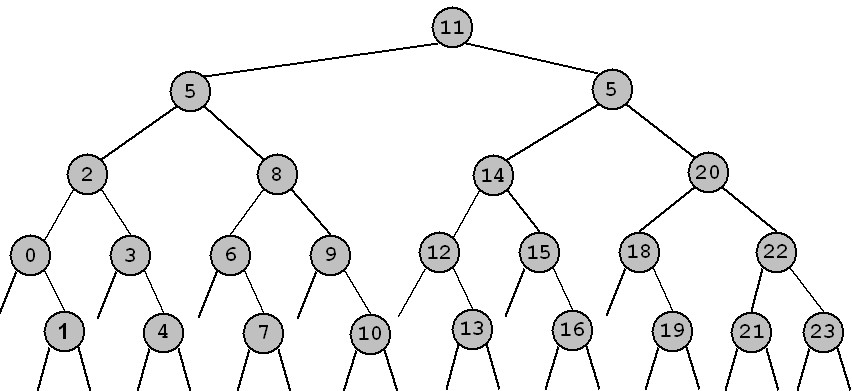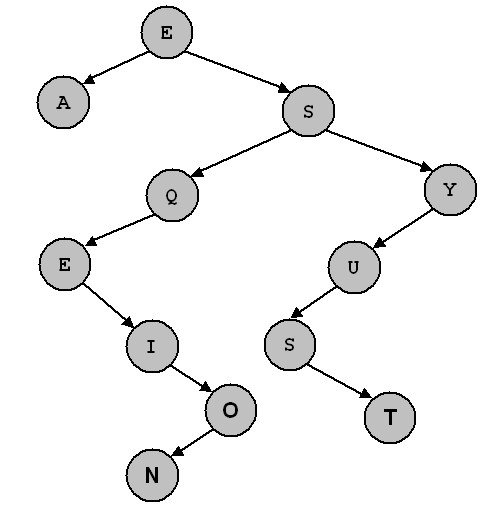ANSWERS TO EXERCISES ON BINARY SEARCH TREES
1. 

2. 
3. void smaller(link tree, int k) {
if (tree == NULL)
return;
smaller(tree->left, k);
if (tree->key < k) {
printf("%d\n", k);
smaller(tree->right, k);
}
}
4. If the BST is built by Prog. 12.7 or 12.9, the equal keys are on the right.
int searcheq(link x, Key k) {
Key t = key(x->item);
if (h == NULL)
return 0;
if less(k, t)
return searcheq(x->left, k);
else if eq(k, t)
return searcheq(x->right, k) + 1;
else
return searcheq(x->right, k);
}
int STsearcheq(Key k) {
return searcheqR(tree, k);
}
5. Be sure to handle case when left and/or right child is NULL.
int isBST(link x) {
if (x == NULL)
return 1;
else if (x->left == NULL && x->r == NULL)
return 1;
else if (x->left == NULL && x->key <= x->right->key)
return isBST(x->right);
else if (x->right == NULL && x->key >= x->left->key)
return isBST(x->left);
else if (x->key <= x->right->key && x->key >= x->left->key)
return isBST(x->left) && isBST(x->right);
else
return 0;
}


